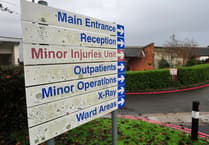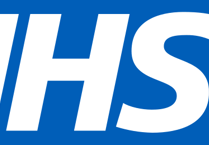Dr Paul Johnson, clinical chair of NHS Devon Clinical Commissioning Group, told a Team Devon meeting of local health and council leaders that just under 140 people are in hospital with the virus.
‘That has been fluctuating over the last seven to 10 days between 130 and 140, and that’s kind of what we expected when we looked at our modelling.
‘Our modelling suggested that we would probably peak towards the end of this month [or] the beginning of December at around 150.
‘And then, all things being equal, and there’s a lot of unknowns with this as we’ve experienced over the last two years, we would then see a gradual reduction in the number of patients in hospital with covid.’
However, with 17 such patients being in intensive care, he added: ‘There are some tight spots, particularly because intensive care is not only for covid, that we have non-covid patients requiring that.’
The update comes as figures show all districts in Devon are now above the UK-average infection rate. Torridge has the highest proportion of cases in the country per 100,000 people, at 808 – more than double last week’s figure.
Steve Brown, Devon’s director of public health said: ‘We are seeing in Devon, and across the country as well, a rise in the number of people testing positive for covid.
‘In terms of the age groups, again we are seeing a similar pattern. It’s generally the younger age group – school age, college age, students – but also, we are seeing it in working-age.
‘So, we’re seeing it in staff in those [educational] settings, but also particularly in parents as well of children and young people who have tested positive.’
Mr Brown said health leaders ‘fully expected’ to see a downward trend in cases during the October half-term followed by a rise ten days later – which is what happened.
Levels of covid testing in the county is around 37 per cent higher than the national average, which potentially picks up more infections.
Mr Brown said: ‘We have really good compliance around testing in Devon.’
He added it was ‘really good in terms of identifying community infections, not so good when we look at the league table of the number of rates, but I’m more interested in doing what we can to break this transmission.’




